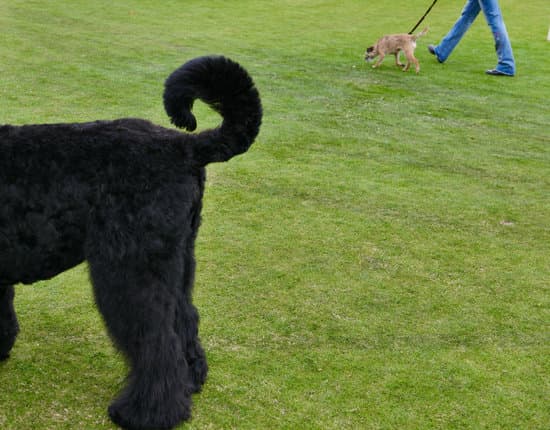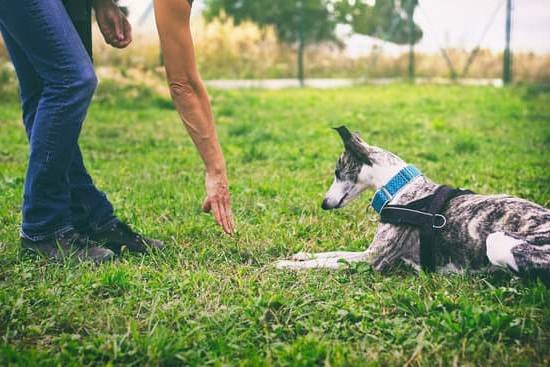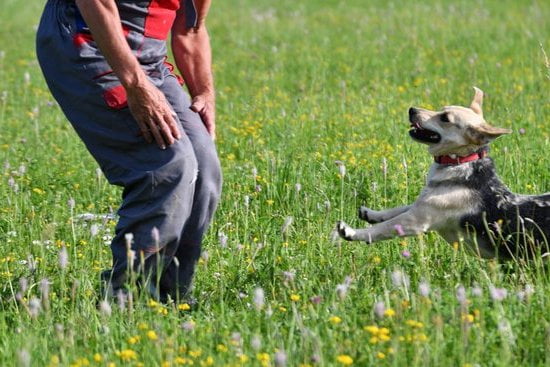A service dog in training plays a crucial role in providing essential support and assistance to individuals with disabilities. These highly trained animals undergo rigorous training to develop the skills necessary to help their handlers lead more independent lives. Whether it’s guiding the visually impaired, alerting the hearing-impaired, or providing emotional support, service dogs play an invaluable role in improving the quality of life for those they serve.
The journey from a young puppy to a fully certified service dog is a challenging but rewarding process. Throughout this article, we will explore the role and importance of service dog training, the different types of service dogs and their specializations, as well as the various techniques and methods used during their training.
Additionally, we will also delve into the legal rights and responsibilities of service dogs in training and share personal success stories that highlight the incredible impact these animals have on people’s lives.
Join us as we take a closer look at the world of service dog training, examining everything from socialization tips to the transformational impact these extraordinary animals have on individuals with disabilities. Whether you are considering becoming a trainer or simply want to learn more about these amazing creatures, this comprehensive guide is sure to provide valuable insight into this important field.
The Importance of Service Dog Training
Service dog training is an essential process that ensures these animals are well-prepared to perform their duties effectively. Without proper training, service dogs may not be able to assist individuals with disabilities in the way they need. This section will explore the importance of service dog training and why it is crucial for the well-being of both the dog and the person they are meant to help.
Assisting Individuals With Disabilities
Service dogs play a vital role in assisting individuals with various disabilities, including visual impairment, mobility issues, hearing loss, and psychiatric conditions such as PTSD. The rigorous training that these dogs undergo helps them develop the skills necessary to perform tasks that can greatly improve the quality of life for their human counterparts.
Whether it’s guiding someone who is blind, alerting a deaf person to sounds, or providing support during a panic attack, a well-trained service dog can make a significant difference in the daily lives of those they serve.
Public Safety and Etiquette
Properly trained service dogs also contribute to public safety by adhering to strict behavior standards. They are taught to remain calm and focused in various environments, including crowded places and noisy settings. Additionally, service dog training instills good manners and obedience in these animals, ensuring that they do not pose a hazard or disturbance to others in public spaces.
Building Trust and Confidence
For individuals with disabilities, having a properly trained service dog means having a reliable companion they can trust. The training process not only teaches the dog how to perform specific tasks but also strengthens the bond between the animal and its handler.
This bond is built on trust, reliability, and mutual understanding, providing peace of mind for those who depend on their service dogs for assistance. Proper training gives both the dog and its handler confidence in their abilities as a team, allowing them to navigate life’s challenges together successfully.
Types of Service Dogs and Their Specializations
Service dogs are trained to assist individuals with specific physical or mental disabilities, and there are many different types of service dogs with various specializations. One type of service dog is a guide dog, which helps individuals who are blind or visually impaired navigate their surroundings safely. These dogs undergo extensive training to learn how to interpret and respond to visual cues, as well as how to safely guide their handlers through various environments.
Another type of service dog is a hearing dog, which is trained to alert individuals who are deaf or hard of hearing to important sounds, such as doorbells, alarms, or someone calling their name. These dogs are trained to make physical contact with their handlers and lead them towards the source of the sound, providing an invaluable sense of security and independence.
Additionally, there are service dogs that specialize in providing assistance to individuals with mobility impairments. These dogs are trained to perform tasks such as retrieving objects, opening doors, turning lights on and off, and even assisting with balance and stability. They play a crucial role in empowering individuals with mobility challenges to live more independent lives.
Overall, the specializations of service dogs are vast and diverse, and they continue to expand as our understanding of the potential roles that these incredible animals can fulfill grows. Whether it’s providing emotional support for individuals with psychiatric conditions or detecting medical emergencies for individuals with epilepsy or diabetes, the impact of service dogs on the lives of those they assist cannot be overstated.
The Training Process
Puppyhood: The Foundation of Training
The training of a service dog begins at an early age, typically when they are just a few weeks old. During this crucial stage, puppies are socialized, introduced to various environments, and taught basic commands such as sit, stay, and come. Positive reinforcement is key during this phase to instill good behavior and develop a strong bond between the puppy and trainer.
Intermediate Training: Building Essential Skills
As the puppy grows older, they will progress to more advanced training that focuses on honing specific skills related to their intended role as a service dog. This includes learning tasks tailored to assist individuals with disabilities such as guiding the visually impaired, alerting for medical conditions, or providing mobility support. Intermediate training also emphasizes impulse control, obedience in distracting environments, and public behavior.
Advanced Training: Specialization and Certification
In the final stage of the training process, the now matured dog undergoes specialized instruction tailored to their designated role as a service dog. For example, a guide dog would receive extensive orientation to navigate complex city streets while maintaining focus amidst numerous distractions.
Following this rigorous preparation, the service dog will undergo evaluation tests to ascertain their competency before being officially certified for service. It is important to note that not all dogs will successfully complete this final stage of training and go on to become certified service dogs.
Through each stage of development, from puppyhood through advanced training, the ultimate goal is to create highly skilled and dependable service dogs capable of making a positive impact on the lives of individuals in need.
Service Dog Training Techniques and Methods
Training a service dog requires specific techniques and methods to prepare them for their important role in assisting individuals with disabilities. Here are some key strategies used in the training of service dogs:
1. Positive Reinforcement: Service dogs are trained using positive reinforcement, which involves rewarding them with treats, praise, or toys when they exhibit desired behaviors. This method helps to build a strong bond between the dog and their handler while also encouraging them to perform tasks effectively.
2. Clicker Training: Clicker training is a popular method used in service dog training. It involves using a clicker to mark a specific behavior at the exact moment it occurs, followed by a reward. The sound of the clicker serves as a clear signal to the dog that they have done something right.
3. Task-Oriented Training: Depending on the type of service dog and their specialization, specific tasks need to be taught through targeted training techniques. For example, guide dogs for the visually impaired must learn how to navigate various obstacles and safely lead their handlers across streets.
These methods are essential in shaping well-trained service dogs that can effectively assist individuals with disabilities in their daily lives.
The Legal Rights and Responsibilities of Service Dogs in Training
My journey with training a service dog began when I decided to pursue a career as a professional dog trainer. I wanted to make a difference in people’s lives by helping them train their dogs to become service animals. The decision was not an easy one, but the reward of seeing the impact of these amazing animals on people’s lives made it all worth it.
As a service dog trainer, I have worked with different types of service dogs, including guide dogs for the visually impaired, hearing dogs for the deaf or hard of hearing, mobility assistance dogs for individuals with physical disabilities, and psychiatric service dogs for those with mental health conditions. Each type of service dog requires specialized training to meet the specific needs of their handler.
The training process for a service dog begins at a very young age. It is crucial to start the training as early as possible to ensure that the dog develops the right skills and behaviors needed to assist their future handler. This includes basic obedience training, socialization, and exposure to different environments and situations they may encounter while working as a service animal.
Training a service dog requires dedication, patience, and consistency. Positive reinforcement techniques such as clicker training and rewards are commonly used to teach the dogs new skills and behaviors. Additionally, exposure to various stimuli and real-life scenarios is also essential in ensuring that the service dog is well-prepared for their future role.
- The importance of starting training at a young age
- Different types of service dogs and their specialized training needs
- Techniques and methods used in training a service dog
The Impact of Service Dogs on People’s Lives
Service dogs in training have a profound impact on the lives of the individuals they are being trained to assist. These remarkable animals provide invaluable support and companionship to people with disabilities, offering them a newfound sense of independence and security. Whether it’s guiding individuals with visual impairments, alerting those with hearing loss, or providing assistance to individuals with mobility limitations, service dogs play an essential role in improving the quality of life for their handlers.
According to the Americans with Disabilities Act (ADA), service dogs are defined as working animals that have been specially trained to perform tasks that mitigate their handler’s disability. This can include a wide range of tasks such as retrieving dropped items, opening doors, and even alerting caregivers in case of a medical emergency.
The presence of a service dog can significantly reduce the barriers faced by individuals with disabilities, making it possible for them to participate more actively in daily activities and social interactions.
Research has shown that the presence of a service dog can also have a positive impact on the emotional well-being of their handlers. Many individuals report feeling more confident and less anxious when accompanied by their service dog. In addition to providing physical assistance, these animals also offer unconditional love and emotional support, creating a strong bond that enhances the overall well-being of their handlers.
Lastly, service dogs in training not only benefit their future handlers but also create awareness and understanding within the community about the rights and needs of people with disabilities. By raising awareness about disabilities and promoting inclusion, these remarkable animals help create a more compassionate and supportive society for everyone.
| Impact | Data |
|---|---|
| Physical Assistance | Task performance such as retrieval, opening doors |
| Emotional Support | Increased confidence and reduced anxiety for handlers |
| Social Awareness | Promoting understanding and inclusion within communities |
Tips for Socializing a Service Dog in Training
Socializing a service dog in training is a crucial aspect of their development and preparation for their future role. During the socialization process, the service dog in training is exposed to various environments, people, and other animals to ensure that they are confident, calm, and well-behaved in different situations. This is essential for their success as a service dog, as they will need to accompany their handler in public places and be comfortable in various settings.
One effective way to socialize a service dog in training is by gradually exposing them to different environments and situations. This can include busy streets, crowded areas, parks, shops, and public transportation. By introducing them to these environments at a young age, the service dog in training can become accustomed to different stimuli and learn to remain focused on their handler despite any distractions.
It is also important to introduce the service dog in training to a variety of people with different appearances, ages, and behaviors. This can help them develop confidence around strangers and become more comfortable interacting with individuals from all walks of life. Additionally, proper socialization with other animals is also important, as it teaches the service dog how to behave and react appropriately when encountering other pets or working animals while on duty.
Overall, socializing a service dog in training requires patience, consistency, and positive reinforcement. It is an essential part of their overall training process and plays a significant role in shaping them into confident, well-rounded service dogs ready to assist their handlers in various situations.
Service Dog in Training
Service dogs in training play a crucial role in the lives of many individuals with disabilities, providing invaluable support and assistance. The importance of service dog training cannot be overstated, as it shapes the dog’s behavior and skills necessary to perform their specialized tasks. From guide dogs for the visually impaired to therapy dogs for emotional support, there are various types of service dogs with different specializations, each requiring specific training techniques.
The journey from a puppy to a fully trained service dog is a challenging yet rewarding process. It requires dedication, patience, and consistency from both the trainer and the dog. There are various training methods and techniques used to prepare these dogs for their important roles, ensuring they can help their handlers effectively. These methods can include positive reinforcement, clicker training, and specific task-based exercises.
It is essential to remember that service dogs in training have legal rights and responsibilities that should be respected by everyone. Proper socialization is also crucial in preparing these dogs for their future duties. A well-socialized dog is confident, calm, and comfortable in various environments, making them better equipped to handle their roles as service animals when they reach full maturity.
Overall, the impact of well-trained service dogs on people’s lives is nothing short of remarkable – providing independence, companionship, and an improved quality of life for those who rely on them for assistance. Whether it’s guiding the visually impaired or providing emotional support to those with mental health conditions, the contributions of service dogs in training are truly invaluable.
Frequently Asked Questions
Does Pennsylvania Recognize Service Dogs in Training?
Yes, Pennsylvania does recognize service dogs in training. These dogs are given the same rights as fully trained service dogs in public places and housing accommodations, as long as they are accompanied by a trainer.
What Are the Requirements for a Service Dog in Kentucky?
In Kentucky, the requirements for a service dog include having a disability that substantially limits one or more major life activities, and the dog must be trained to mitigate this disability. There is no specific certification or registration required.
What Are the Requirements for Service Dogs in Washington State?
Washington State requires that a service dog be individually trained to do work or perform tasks for the benefit of an individual with a disability. The dog must also be under the control of the handler at all times and cannot pose a direct threat to the health or safety of others.

Welcome to the blog! I am a professional dog trainer and have been working with dogs for many years. In this blog, I will be discussing various topics related to dog training, including tips, tricks, and advice. I hope you find this information helpful and informative. Thanks for reading!





